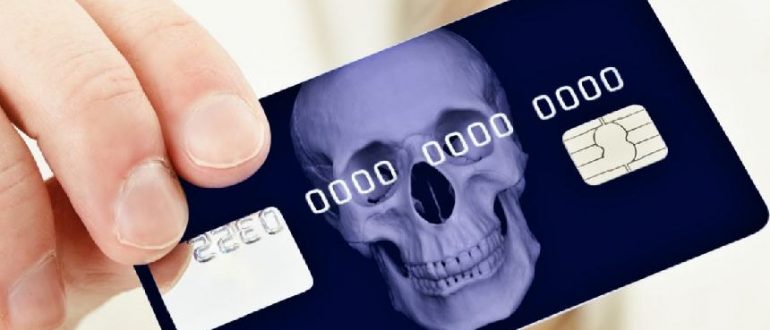What is Bank Fraud?
First, it constitutes any criminal offense that that tries to defraud a financial institution.
The goal may be to get assets, money, or even property owned by a bank. The goal may even be to control the bank itself. For that reason, it isn’t just practiced by individuals.
It might be practiced by institutions against a bank (in attempt to push it out of competition).
Also, bank fraud has many subcategories. They include the following:
- Loan Fraud. This what individuals mostly imagine with regards to bank fraud. It involves illegal methods of misrepresentation. Those misrepresentations involve false statements on loan applications. Its goals revolve around accessing funds that a customer doesn’t qualify for.
- Document Falsification. Can be included with loan fraud. It involves misrepresenting personal information (identity, finances, and assets) to gain a financial institution’s trust. Though its intention may extend beyond loan fraud. For example, a document falsification might be done for tax evasion.
- Counterfeit Documents. While document falsification looks at half-truths on official paperwork, counterfeit documents look at forged paperwork. The goal is to blatantly lie to a financial institution, and it may involve a variety of motives (such as getting extra loans).
- Check Forgery. Involves using either fake checks, or trying to use the legal checks of other people to access funds at a bank.
- Mail Fraud. Using misrepresentation by mail to access bank finances.
- Wire Fraud. Using telephone to defraud a financial institution.
As of recent times, bank fraud has also extended to the online world, where it’s often done in the form of phishing.
Malicious parties will sometimes setup fake banking websites, or send malicious links to access an individual’s bank information – only to steal that information for their personal use.
Those parties may be prosecuted for bank fraud if they’re impersonating an online banking site.
How is Bank Fraud Prosecuted?
It’s prosecuted at the federal level, and following the definition of the U.S. Code’s Title 18 (Bank Fraud Statue).
Bank fraud is punished with a 30 year prison sentence. Convicted felons may be fined up to $1 million.
Prosecution may even be more brutal to those who defraud a bank that’s insured by the government. In those cases, investigations and prosecutions are quite detailed.
Other Consequences of Being Convicted
For starters, it hurts the individual’s reputation. It’s almost impossible for a convict to seek employment or earn a living with such a track record.
Next, there’s the publicity. Assuming a convict managed to get away with a lot of assets, they can expect their case to be discussed in media outlets.
That publicity doesn’t only hurt the convict. It also hurts the financial institution’s reputation, where it may be seen as careless with who tries accessing its funds.
For those reasons, if you’re a financial institution, you should set in-place precautions to catch any fraud attempts. And if you’re a customer, you should have a framework on dealing with institutions for your financial needs.
How Financial Institutions Can Protect Themselves
For any bank, there are two sources of fraudsters – internal and external.
Internal fraud is employee-based. It occurs when individuals within your organization embezzle funds, misreport financial information, or leak money for their personal use.
Individuals connected to the employee may also take advantage of them for special banking privileges.
Guarding against internal fraud can be done through meticulous hiring practices. You should run extensive background checks on those entering your organization.
Next, we recommend setting up a checks and balances system. The reason being, many serious cases of banking fraud occur from multiple conspiring internal agents who might have more control in your institution than others.
What About External Sources?
A great starting point to solve that is cyber security.
While it isn’t a fail proof method, it’ll greatly reduce the odds of a fraudster hacking into your bank’s database.
Next, you can setup methods of identifying people making transactions, especially through e-banking.
That is, you can apply multi-factor authentication, which will include:
- Visual verification
- Electronic capture of signals
- Automatic signature verification for documents (works well real-time)
Something else to do is keep track of transactions.
Banks can set limiters that detect transaction frequency, and transactions done over a certain value. This can help them detect potential suspicious activities.
Next, institutions can setup a multi-control process for transactions.
For example, one individual can create a transaction, with another reviewing, and a third finalizing it.
Customers – Protecting Yourself
As we mentioned earlier, impersonation is the primary threat to look out for.
That impersonation can be done through fake online banks. They can also be done by email. In fact, even phone and text are common channels!
That’s not all. Sometimes, scammers will contact a customer proactively, while claiming to represent a financial institution or a financial public agency.
In all of the previous scenarios, you should watch out for those who demand your financial and personal information.
That’ll be your credit card, bank card, account details, etc.
Never provide that information to strangers contacting you. Ask for verification first. If they refuse to comply, call the police.
For more information please see 18 U.S. Code § 1344 – Bank fraud.
You Can Always Ask Us for Help
The best way to protect yourself is to have a lawyer backing you up.
And if the damage has been done already, then no worries. Our firm can represent you in a bank fraud case.
Esfandi Law Group will provide you in-depth info on what can be done to restore your lost finances, without incurring you excess costs!
Finally, keep in-mind that the previous information doesn’t count for legal consulting. It’s a guide to help you and your institution guard yourself from fraud!



Comments are closed.